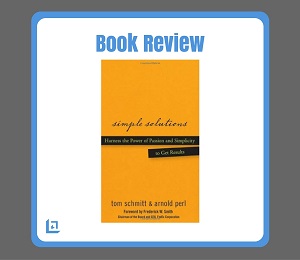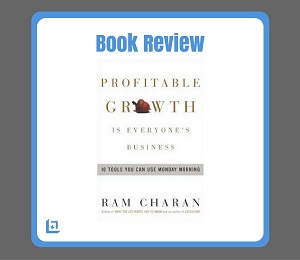- Home
- Leadership Book Reviews
- Simple Solutions
Simple Solutions
Simple Solutions, written by co-authors Tom Schmitt and Arnold Perl, is a great road map for leaders of all organizations. This book provides clear, concise and straightforward guidelines for leadership effectiveness.

Great leadership is practical and highly inspirational, combining leadership skills, creativity and personality.
In addition, the authors emphasize that simplicity is the fundamental foundation
of effective leadership. Taking a simple solutions approach to leadership is such a key concept in the book, they've devoted the entire first chapter to that primary point.
"Once the leader simplifies his or her own job, he needs to then become an evangelist for simplification among team members."
These leaders earn credibility by being able to thoughtfully, but quickly, niche down to the very essence of what needs to be done - providing clarity and focus for all interested parties.
Too often leaders allow subordinates to waste time working on solutions to problems that are not clearly understood. Leaders must encourage team members to go back and take some time to get to the heart of the issue before bringing it to them to support or solve.
"Plain question and plain answer make the shortest road out of most perplexities.
- Mark Twain
A leader must understand that being brief, clear and concise is a skill, and it's one that can be developed. To see a perfect example all you have to do is go to Twitter, which limits every post to only 140 characters.
Twitter's 140 character limitation is genius in the fact that it forces people to construct a cohesive thought in a very short statement.
At first it takes the user some time to whittle the words down in a way that meet the 140 character criteria, yet still conveys the message in an accurate way. Over time, however, the user becomes more adept and can create posts much more quickly.
A good exercise to gauge how effectively you are at being clear and concise in your communications is to go back to the last 10 emails or memorandums you've sent and read them. Go line by line with a critical eye and ask if each sentence, each word, was truly necessary.
The truth is it takes longer to write a short, concise, "to the point" message. Similarly, it's more difficult to formulate a convincing vision and strategy for a business project or program.
“Effective leadership is not about making speeches or being liked; leadership is defined by results not attributes.”
- Peter Drucker
Simple Solutions For Collaboration
 |
When you watch professional sports you see team demonstrate teamwork in a way that appears to be effortless, but anyone who has led any team of people, whether in sports or business, knows without a doubt that teamwork and collaboration doesn't just happen.
To be chosen to be a part of any team, the team member has proven to be worthy of their position based on their own merit. However, because they are part of a larger team, the leader's task to get each of these high-performing individuals to work together (not because they have to, but because they want to) and collaborate in order to maximize the team's overall results.
The authors state three key principles of collaboration:
"If you have an apple and I have an apple and we exchange these apples then you and I will still each have one apple. But if you have an idea and I have an idea and we exchange these ideas, then each of us will have two ideas."
-George Bernard Shaw
- Mutual Respect - In order for collaboration to grow, team members must have mutual respect for their leader and for each other. One of the best ways for a leader to promote mutual respect is to ensure team members get to know each other. Too often when people don't get along, they simply haven't invested enough time to really get to know each other.
- Enthusiasm - Watch out for team members who purports to be "playing devil's advocate" as this could just be a guise of being a nay-sayer, which can be counter-productive to a collaborative team environment. This doesn't mean that you want everyone to be "yes-men or women", but it's important that a leader creates an environment where the emphasis is on finding solutions, versus identifying barriers. "There will always be barriers.", which can often be the perfect response to the devil's advocate.
- Inclusiveness - Leaders who are forward thinking understand that with any program or project there are many areas of the organization that at some point in time will need to weigh in. (I.e., legal, finance, compliance and human resources) In the spirit of fostering collaboration within your entire organization, you are wise to get all key stakeholders involved at the very beginning. They'll need to support the project eventually and they are there for a specific reason, so take time to invite them in at the start and you're project will go more smoothly.
Simple solutions provides a helpful road map for leaders working to build collaboration within their team for the purpose of improved bottom-line results. The authors acknowledge that we live in a complex world while also pointing out that we tend to over-complicate how we lead our teams.
I really enjoyed this book and I think you will too.
Author Bio's
Tom Schmitt is President and CEO of FedEx Global Supply Chain Services and Senior Vice President of FedEx Solutions.
Arnold Perl is a Partner at the national labor and employment law firm of Ford & Harrison, LLP.




